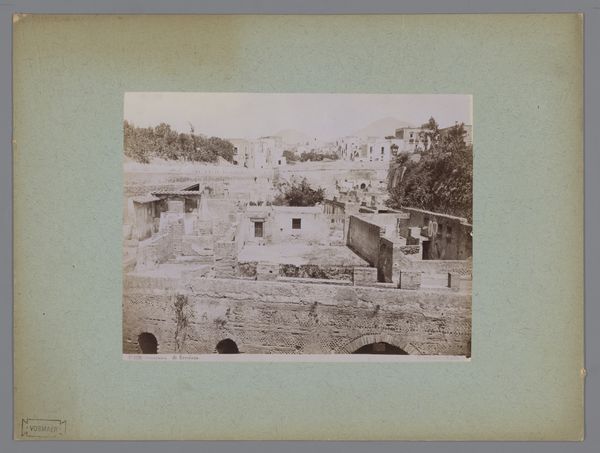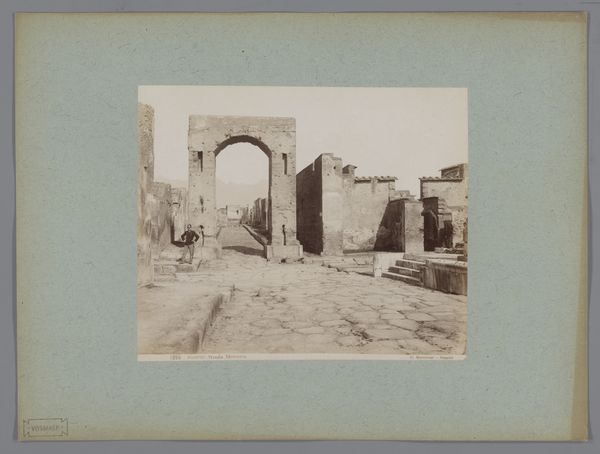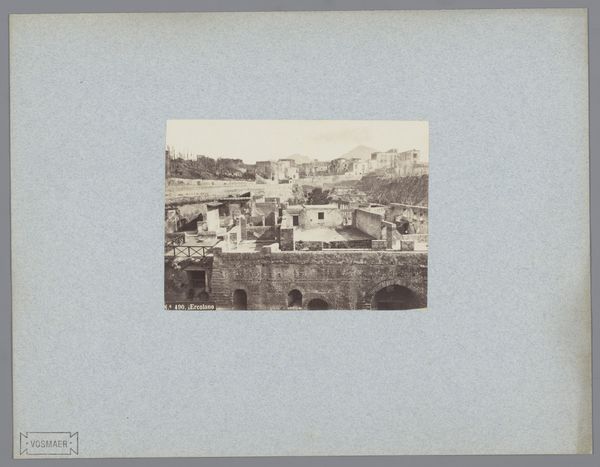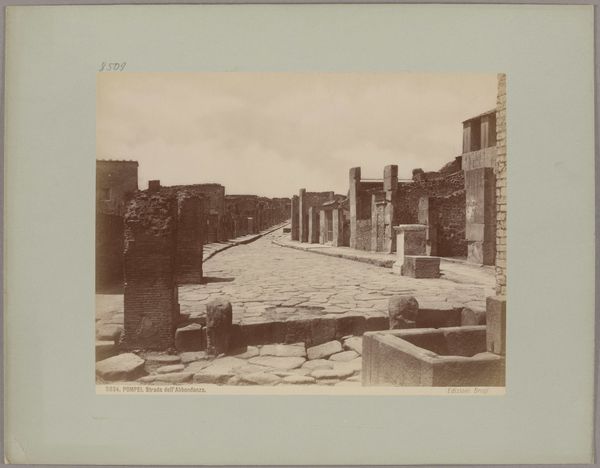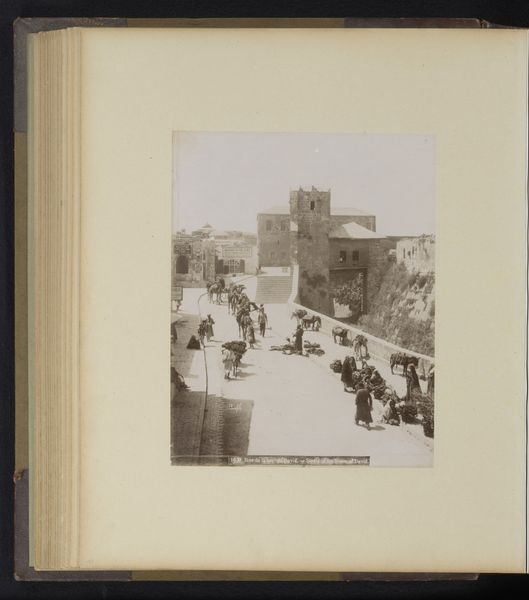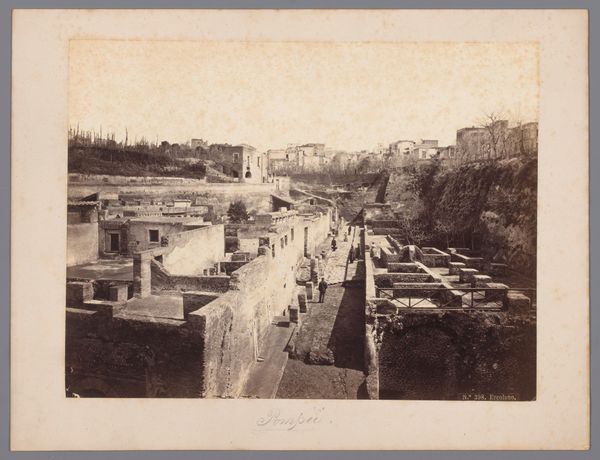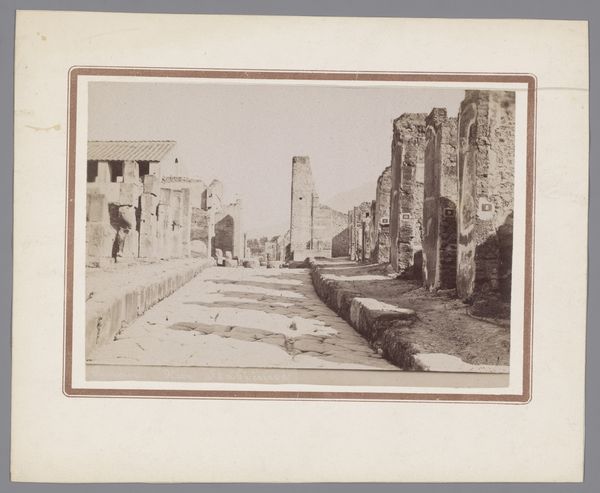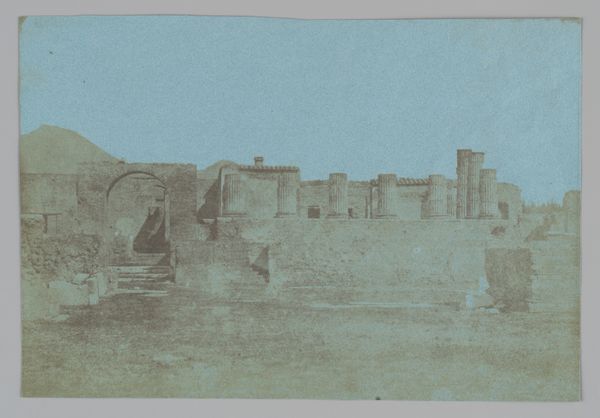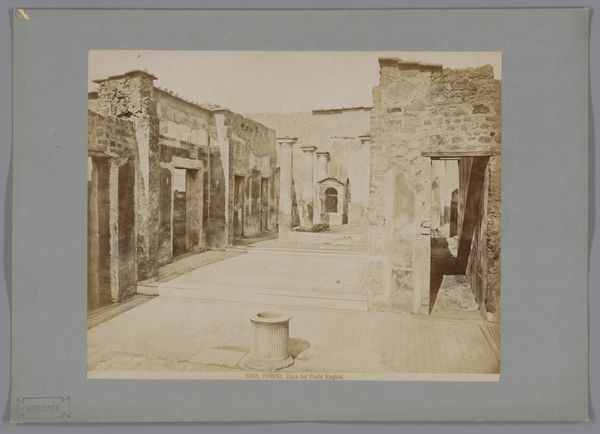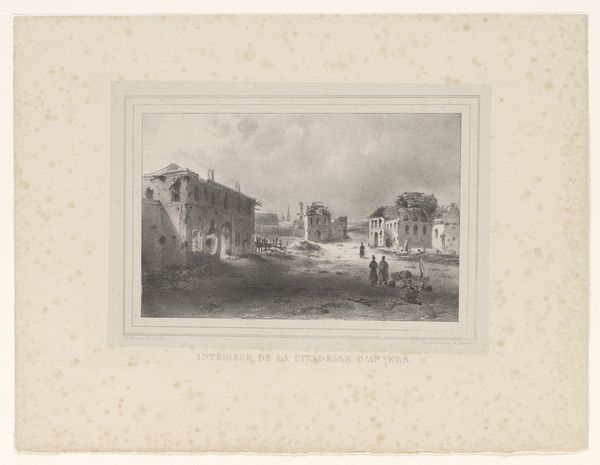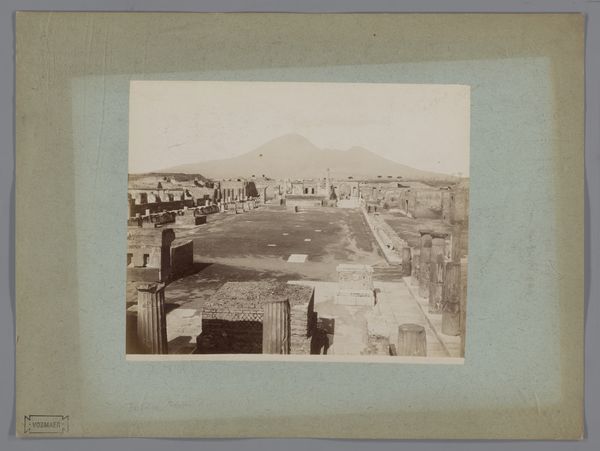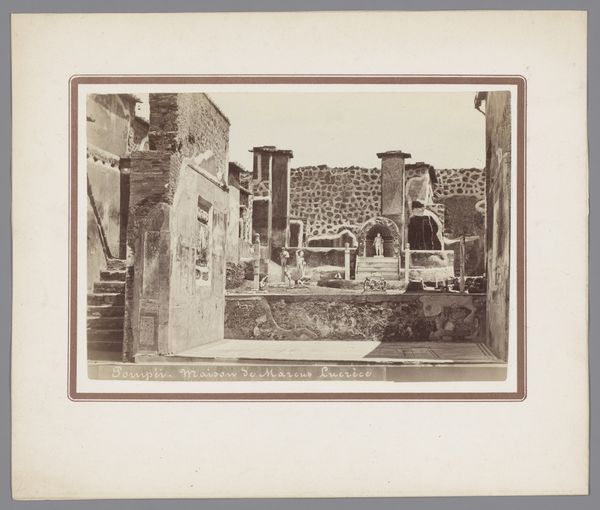
photography, albumen-print
#
landscape
#
photography
#
ancient-mediterranean
#
cityscape
#
albumen-print
#
realism
Dimensions: height 202 mm, width 252 mm, height 255 mm, width 355 mm
Copyright: Rijks Museum: Open Domain
Editor: Here we have Giacomo Brogi's albumen print, "Gezicht op Herculaneum," created sometime between 1864 and 1881. It depicts the ruins of Herculaneum, bathed in a warm light. The composition seems to invite reflection on the passage of time, don't you think? What do you see in this piece beyond the obvious ruins? Curator: It's a fascinating juxtaposition, isn't it? This photograph, taken in the latter half of the 19th century, uses the burgeoning medium of photography to capture an ancient site frozen in time by Vesuvius. It raises questions about our relationship with history, and how the act of documentation can become a form of both preservation and interpretation. Do you think that the rise of photography as a social recorder and artform impacted the public interest in ancient cultures, making sites like Herculaneum subjects of fascination? Editor: Absolutely. Seeing this really sparks my interest in the social context. How would the average person in the 1870s have perceived this image compared to how we might see it today? Curator: That's a vital question! For a contemporary audience, bombarded with images daily, a photograph like this might seem simply a record. But for people in the late 19th century, photography still carried an aura of truth and documentation. Consider also the rise of colonial archaeology at this time, and how the viewing of "ruins" were sometimes romanticized, but also fueled notions of European cultural superiority. Could this photograph have subtly contributed to those attitudes, by framing Herculaneum as something ‘lost’ and ‘discovered’ again? Editor: That's a perspective I hadn't considered. It highlights the photograph's power in shaping narratives beyond just what is visually represented. Curator: Exactly. It’s not just a snapshot of the past, but a cultural artifact reflecting its own present. Considering whose stories get told – and whose are erased – in historical narratives, how do you see this photograph fitting into larger discussions about memory and representation? Editor: That's given me so much to consider, seeing it as an artifact embedded in a specific time, not just as an objective recording. It adds so much to understanding.
Comments
No comments
Be the first to comment and join the conversation on the ultimate creative platform.
